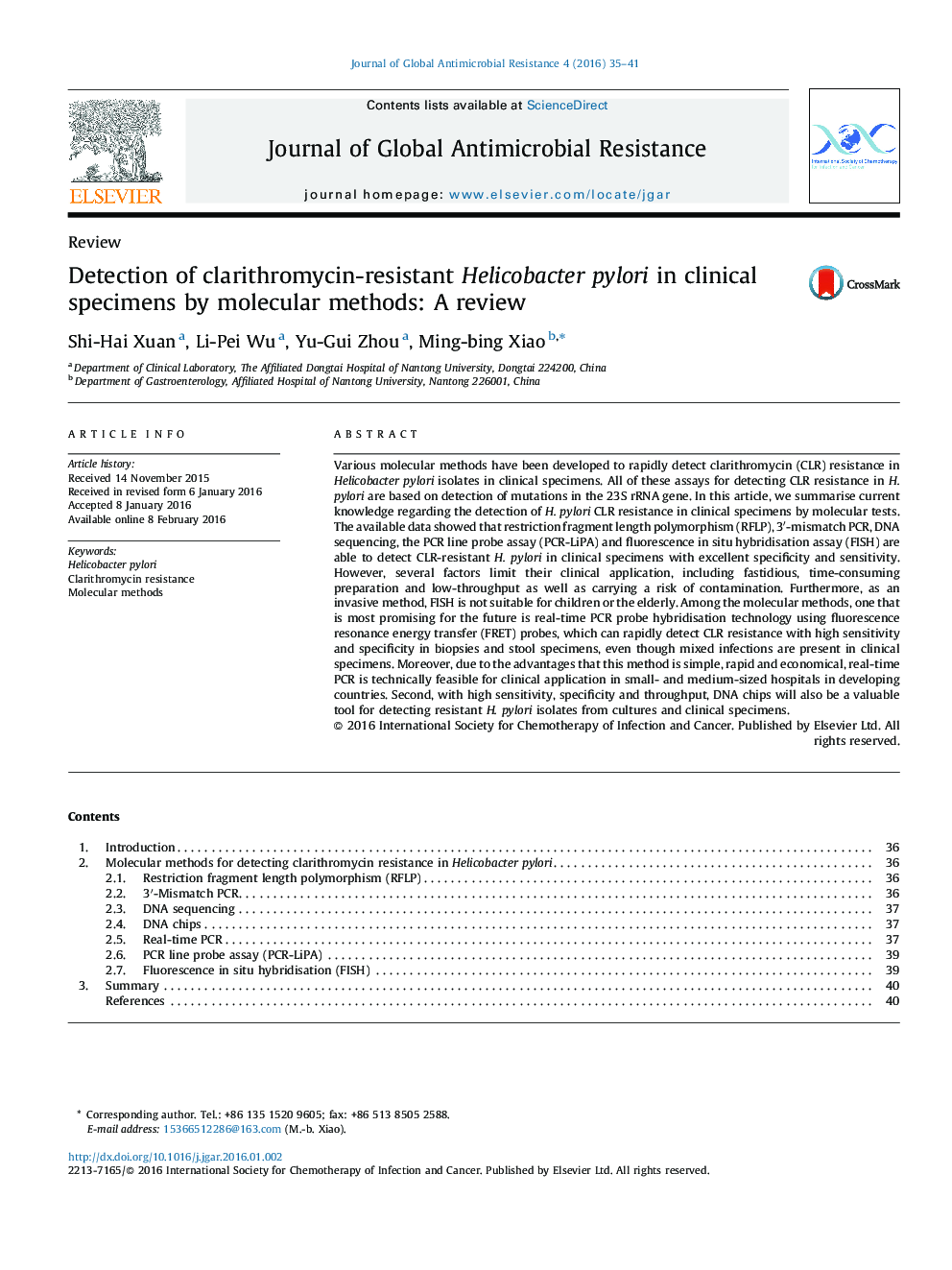| کد مقاله | کد نشریه | سال انتشار | مقاله انگلیسی | نسخه تمام متن |
|---|---|---|---|---|
| 3405622 | 1593365 | 2016 | 7 صفحه PDF | دانلود رایگان |
• Molecular methods offer an attractive alternative approach to determine clarithromycin (CLR) resistance.
• Molecular methods for detecting CLR resistance are based on detection of gene mutations.
• The most promising for the future is real-time PCR hybridisation assay.
Various molecular methods have been developed to rapidly detect clarithromycin (CLR) resistance in Helicobacter pylori isolates in clinical specimens. All of these assays for detecting CLR resistance in H. pylori are based on detection of mutations in the 23S rRNA gene. In this article, we summarise current knowledge regarding the detection of H. pylori CLR resistance in clinical specimens by molecular tests. The available data showed that restriction fragment length polymorphism (RFLP), 3′-mismatch PCR, DNA sequencing, the PCR line probe assay (PCR-LiPA) and fluorescence in situ hybridisation assay (FISH) are able to detect CLR-resistant H. pylori in clinical specimens with excellent specificity and sensitivity. However, several factors limit their clinical application, including fastidious, time-consuming preparation and low-throughput as well as carrying a risk of contamination. Furthermore, as an invasive method, FISH is not suitable for children or the elderly. Among the molecular methods, one that is most promising for the future is real-time PCR probe hybridisation technology using fluorescence resonance energy transfer (FRET) probes, which can rapidly detect CLR resistance with high sensitivity and specificity in biopsies and stool specimens, even though mixed infections are present in clinical specimens. Moreover, due to the advantages that this method is simple, rapid and economical, real-time PCR is technically feasible for clinical application in small- and medium-sized hospitals in developing countries. Second, with high sensitivity, specificity and throughput, DNA chips will also be a valuable tool for detecting resistant H. pylori isolates from cultures and clinical specimens.
Journal: Journal of Global Antimicrobial Resistance - Volume 4, March 2016, Pages 35–41
